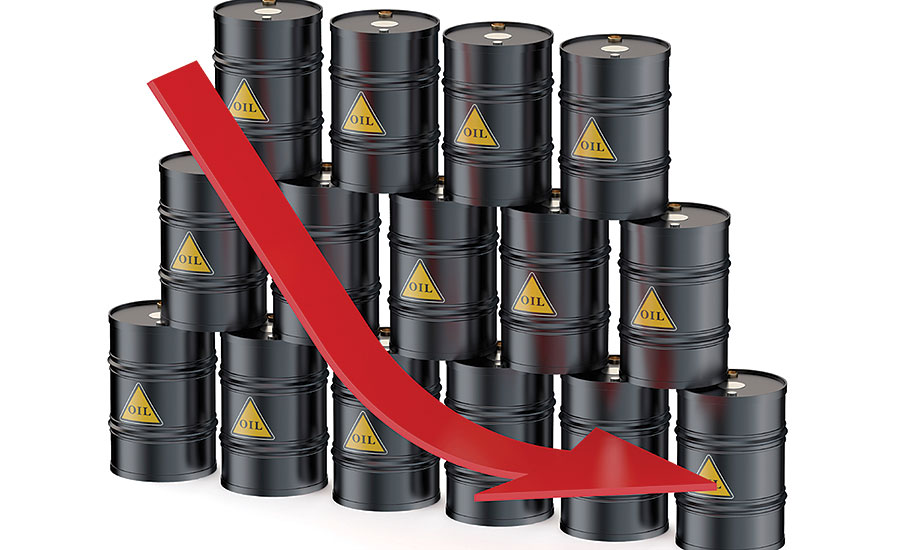Some of the world’s largest energy companies and investment banks are becoming more pessimistic about the ability of crude oil pricing to reach even $60 a barrel next year, reporting steep losses as they take hits on projects that no longer make financial sense, according to The Wall Street Journal.
A barrel of oil was priced at more than $100 in June 2014, but a combination of ample supply and weaker demand drove the international benchmark price to about $38 by early December 2015, the lowest sustained levels since the financial crisis.
Continued oversupply means that next year, Brent crude prices will average $58 a barrel and West Texas Intermediate, the U.S. oil benchmark, will average $54 a barrel, according to 13 investment banks polled by The Wall Street Journal. Many of the same banks were predicting $70 a barrel in 2016 just a few months ago.
“We don’t know”
“The reality of the day is that we don’t know when and how this will balance out. We don’t even know if it really stabilizes,” Ben van Beurden, Shell’s CEO, told The Journal. “If you have a high degree of uncertainty over the oil price, you have to have projects that are very resilient.”
While U.S. shale oil production, a driving factor in the supply glut, has started to fall, heavyweight producers like Saudi Arabia and Russia are still pumping at near-record levels at a time when the market is anticipating new crude from Iran. Though supply remains strong, demand growth is expected to weaken alongside a decline in the economy of China, the world’s No. 2 oil consumer.
Cheap energy is forcing producers to give up on ventures that no longer make sense with prices below $50 a barrel.
Shell posted a $6.1 billion third-quarter loss over its decision to walk away from exploring the Arctic for oil and from exploiting Canada’s oil sands, which contributed to $7.9 billion in charges to earnings.
In the U.S., ConocoPhillips reported a loss of $1.1 billion and announced new plans to trim spending.
Petro China Co., the biggest oil-and-gas producer by volume in China, said its third-quarter profit fell by more than 80%. At Total, the French oil giant, the decline was 69% and partly the result of a $650 million write-down in its Canada oil-sands ventures.
Shell is looking at about $55 a barrel as the break-even price for new projects and took billions of dollars in impairment charges in the third quarter after lowering its long-term oil and gas price outlook.
Global picture
U.S. production has started to tail off as low prices force drillers to shut rigs and shelve costly projects.
According to the U.S. Energy Information Administration, the nation’s output peaked in April at a multi-decade high of 9.6 million barrels a day and since has fallen to around 9.1 million barrels.
Other major suppliers, including the Organization of the Petroleum Exporting Countries have kept producing at a high pace. Last November, the 12-nation oil cartel led by Saudi Arabia embarked on a policy of keeping output high in a bid to defend its market share. Iran, which holds 13% of the world’s oil reserves, is expected to ramp up oil exports when sanctions against the country are lifted following July’s nuclear agreement with major Western powers. While gradual, Iran’s return could add up to 500,000 barrels a day to the global oil market by the middle of 2016, analysts say.
Meantime, a string of weak economic readings in China has fueled fears about a slowdown in the world’s second largest economy, which could spill over to other emerging markets. China recently reported growth of 6.9% for the third quarter, the lowest rate since 2009.
Continued cheap crude is extending problems for everyone from Russian budget officials to U.S. shale-oil drillers. It has also hurt investors, closing some hedge funds and burning other funds and private equity managers that over the past year poured billions into debt issued by troubled energy companies, hoping to profit off a reversal of oil’s slide, according to The Wall Street Journal.
Many investors share analysts’ gloomy view that companies will continue to be hit by weak oil throughout next year.



